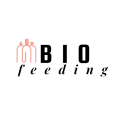A Smooth Transition to the Bottle
Every mom wants to ensure her baby is well-fed and comfortable during feeding times. However, transitioning to bottle feeding has its challenges, which can often cause stress for both mom and baby. That’s where this feeding guide comes into play, aiming to turn bottle feeding into a rewarding, stress-free experience for all involved.
Introducing the Bottle: A Slow and Steady Approach
Think of introducing the bottle as a journey, not a sudden shift. The transition should be gradual, giving your baby the opportunity to adjust to the new feeding method. Bio-feeding and a gradual transition from breastfeeding to bottle feeding can help alleviate any feeding issues and make the process smoother for both you and your little one.
Bottle Selection Matters
Another critical element of this guide to bottle feeding is the selection of the right bottle. The type and design of the bottle can significantly impact your baby’s feeding experience. Different babies have different preferences, so it’s about finding the one that works best for your little one. Here are a few tips to guide your selection:
- Look for a bottle with a wide nipple base. This will mimic the shape of a natural breast, which can make the transition smoother.
- Opt for bottles with anti-colic features such as venting systems, which can reduce the amount of air your baby swallows while feeding.
- Choose a bottle that’s easy to clean. Removable parts will make your bottle cleaning process easier and more thorough.
Feed Your Baby & Toddler Right has some excellent suggestions on selecting the appropriate bottle.
Creating a Comfortable Atmosphere
Creating a tranquil and comfortable environment while bottle feeding can help make the feeding process more enjoyable for your baby. Make sure your baby is comfortable and secure in your arms, maintaining skin-to-skin contact, which can promote bonding and a sense of security. A calm environment can also encourage your baby to focus on feeding, reducing distractions.
Mastering the Bottle Feeding Technique
Achieving the perfect bottle-feeding technique can make a world of difference in your baby’s feeding experience. The Lactation Consultant’s Guide to Bottle Feeding provides some practical tips and techniques to guide bottle feeding successfully. Here are some fundamental bottle feeding tips you should be aware of:
- Hold your baby in a semi-upright position while feeding to prevent ear infections.
- Ensure that the bottle is tilted enough to fill the nipple with milk, preventing your baby from swallowing air.
- Take note of your baby’s cues. If they turn away or become fussy, it may mean they’ve had enough.
To delve more into the art of bottle feeding, check out Responsive Feeding: Your Baby’s First Stress-Free Mealtime. This guide dives deeper into understanding your baby’s feeding cues and promoting a positive feeding relationship.
Finding The Right Formula
If you’re introducing formula as well, settling on the right one can be slightly overwhelming due to the multitude of brands available. Follow a methodical approach while choosing the formula, considering factors such as nutritional composition, ease of digestion, and any potential allergenic ingredients.
It’s also important to talk to your pediatrician before making any changes to your baby’s diet. Why Choosing To Formula Feed Was The Best Decision I Made As A New Mom, shares some personal insights that can guide your decision-making process.
Timing the Transition
Getting the timing right is critical in the transition to bottle feeding. It’s advisable to introduce the bottle when your baby is not overly hungry. A fussy, hungry baby might find it more difficult to adjust to the bottle. A calm baby is more likely to take to the bottle more agreeably.
Bonding During Bottle Feeds
Just because you’re switching to a bottle doesn’t mean that you have to lose that precious bonding time with your baby. When bottle feeding, you can still maintain eye contact, speak in a gentle tone, and hold your baby close.
It’s also worth noting that bottle feeding can allow other family members to bond with the baby, too. They can participate in feedings, sharing the love, the cuddles, and yes, even the 2 AM feeding shifts.
Remember, Each Baby is Different
Despite following all the tried and tested strategies, remember that each baby is unique. What worked for one baby might not work for another, and it’s essential to respect your baby’s individuality. Adjust your strategies based on your baby’s preferences and responses.
For more practical insight into parenting, check out A Mom’s Guide to Stress-Free Travel With Kids and How To Pray Eid Salah With A Newborn Baby.
More Support Equals Less Stress
The transition to bottle feeding can be an emotional juncture for many moms. It’s perfectly normal to have mixed feelings about this transition. It can be helpful to reach out to fellow moms who are or have undergone a similar transition. They can offer reassuring words, practical advice, or simply a sympathetic ear.
Remember, just because you’re making a transition doesn’t mean you’re alone. Many communities can provide support and reassurance during this transition, such as A Mom’s Guide to Stress-Free Traveling With a Baby.
Transitioning to bottle feeding is a significant milestone in your baby’s life, one that should be seamless and positive—for both you and your little one. With patience and persistence, this process can indeed be a smooth and stress-free experience.

